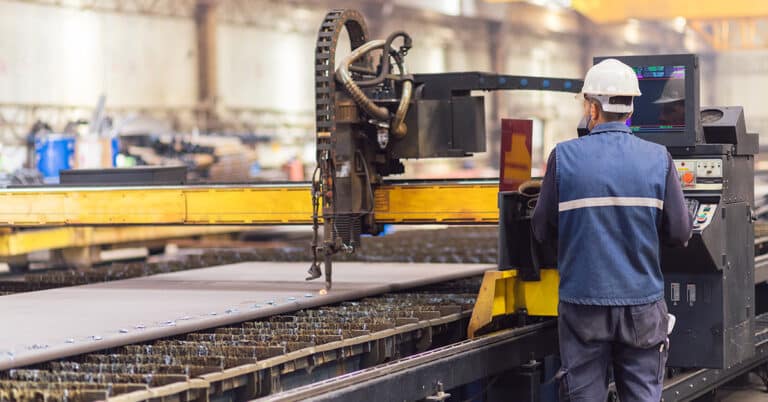Smart maintenance is a phrase that you’re probably hearing more often as a manufacturing facility owner or manager, especially if you’ve been looking into similar trends such as Industry 4.0, predictive maintenance or the Industrial Internet of Things (IIoT). Each of these principles, along with smart maintenance, draws on a similar foundation — explained in more detail below.
What is smart maintenance? It is the synthesis of vast amounts of machine performance data, used to drive more informed action and decision making about maintenance, inventory, supply chain and more. Smart maintenance systems enables efficiency through predictive maintenance, more effective training and allotment of personnel, and a more transparent, productive spare parts management process — to name just a few benefits. Read on to learn more.
Benefits of adopting smart maintenance
Smart maintenance offers a number of benefits to manufacturers that adopt it. These benefits include:
Lower costs
Efficiency and cost reduction typically go hand in hand, and smart maintenance is no exception. The performance data and communication that underlie smart maintenance can enable predictive maintenance — the early detection and troubleshooting of potential equipment issues based on subtle indicators that occur well before malfunction or unplanned shutdowns.
By reducing or eliminating unplanned downtime, equipment can provide value for a greater time. Facilities are also able to reduce or eliminate emergency maintenance and parts orders, achieving much greater control over costs and time allotment.
Smart maintenance can also yield cost benefits in inventory management and ordering, using sensors and data to achieve just-in-time ordering, easier access to spare parts and more accurate inventory.
Real-time data for informed decision making
In manufacturing – especially in today’s high-speed, automated environment — decisions must be made quickly. As with any decision, the more information you have, the more effective that decision is likely to be. Smart maintenance provides a steady flow of real-time performance data that enables facility managers and technicians to make informed, effective decisions about maintenance, personnel allotment, equipment usage, ordering and more.
Industry 4.0 & the future of smart factories
The future of manufacturing is here, in the form of Industry 4.0, the smart factory, and smart maintenance. At this point, new technology adoption is a necessity in order to remain competitive and cost-effective.
Even if you aren’t undergoing a digital transformation, your competitors are — and the differences will quickly begin to show. Effective, data- and technology-driven maintenance and decision making are key first steps in building a smart factory, meeting customer expectations, and retaining your competitive edge.
Common smart maintenance applications
- Sensor Technology: Predictive maintenance sensors are the primary technology behind smart maintenance. These sensors monitor equipment performance vectors such as temperature, vibration and ultrasonic sound. This data is then used to uncover the earliest indicators of potential maintenance scenarios and troubleshoot when convenient — well before it becomes a necessity.
- Predictive Maintenance: Driven by sensors, data and communication, the value of predictive maintenance lies in its ability to vastly reduce or even eliminate unplanned downtime, increasing overall equipment effectiveness and deriving the greatest value possible from your investment. Predictive maintenance allows technicians to identify problems early on and schedule time to address them — without costly, unplanned shutdowns.
- Collaborative Robots: Automated maintenance is increasingly common, and the role of cobots in maintenance is growing. Cobots — collaborative robots — are built to work alongside human workers safely and effectively. Cobots can fulfill the most dangerous, difficult and dull tasks, while technicians can perform higher-level, value-added tasks such as prioritization and decision making.
- Augmented Reality: Augmented reality in maintenance is changing the face of the manufacturing facility, enabling technicians to receive instructions, tutorials and guidance through the use of a wearable, such as a set of goggles or glasses. Augmented reality can increase accuracy and efficiency while reducing the learning curve for trainees. This technology helps to maintain institutional knowledge and close the technical skills gap for new employees.
- Computerized maintenance management systems (CMMS): Combining several maintenance processes into a single system, CMMS automates and streamlines many activities. These include inventory management, compliance record-keeping and tracking of unscheduled maintenance.
- Remote monitoring: Enabling operators to observe and analyze data in a centralized location, smart systems make remote maintenance possible. This improves technician and production efficiency throughout the factory. Having as much information as possible at their fingertips makes technicians more effective at their jobs.
- Spare parts inventory management: One of the most important elements of smart management is how it can enhance spare parts inventory management. By leveraging data analysis, factories can gain clearer insights into which equipment will need the most attention in the near future.
Lean smart maintenance
When it comes to delivering the highest level of value from smart maintenance, many experts have encouraged integrating lean maintenance principles. This lean smart maintenance approach is aimed at reducing costs while increasing flexibility within processes. Facilities that embrace this methodology follow a process of setting their goals, implementing measures to achieve them, measuring success and making any necessary improvements. Following this template successfully leads to overall better results across maintenance activities and prevents issues that can lead to inefficient operations.
One of the hallmarks of this philosophy is avoiding wasteful activities that result in unnecessary consumption of time and other resources. This is essential for maintaining the highest level of value for customers and remaining focused on what truly matters for the manufacturer.
ATS offers the services and expertise to bring your facility in line with the most effective smart maintenance and Industry 4.0 practices. We can help you develop the right strategy for your facility, applications and needs. Our R360® Machine Health Monitoring includes the people, processes and technologies to not only monitor, but also interpret and act upon the data to eliminate unplanned downtime.
To learn more, contact us today.






